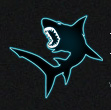Últimos assuntos
How One Man With An Idea And $1000 Made The Global iOS Hit Trainyard
Página 1 de 1
 How One Man With An Idea And $1000 Made The Global iOS Hit Trainyard
How One Man With An Idea And $1000 Made The Global iOS Hit Trainyard
How One Man With An Idea And $1000 Made The Global iOS Hit Trainyard
Few games embody the iOS indie-dev dream so perfectly as Matt Rix's Trainyard. Its perfect trajectory from unknown puzzle game -- developed by just one man in his spare time for less than $1000 -- to number 2 paid app around the globe represents the aspirations of countless prospector game developers as they set out into the iOS wilderness.
Success came literally overnight. Trainyard was released on June 10 this year, selling modestly till Apple featured the game in its recommended list a the start of October. The increase in sales the next day was astronomical, shunting the game from relative obscurity into the hot limelight.
Gamasutra's European Editor Simon Parkin caught up with Rix two months after this crucial turning point to discuss the game's development, and what its gigantic success means for the developer's future.
How did you come to develop Trainyard?
I really wanted to do something that would bring me closer to my goal of developing games full time. I made games in my spare time on-and-off for my whole life, but the last time I released a game was over 10 years ago. I decided that I was going to take some steps to prove I could make a successful game, and hopefully bring myself closer to full time game development.
I developed Trainyard whenever I could find the time. There were a lot of difficulties, slowdowns, and complete stoppages, but I never gave up. I spent a year chipping away here-and-there until it was finally finished.
What's your day job?
I work full time at a company called Indusblue in Toronto. We develop iPhone and iPad apps for “big name” clients. It’s a lot of fun and very challenging. It’s a small company with only 12 employees, so there’s often a lot of freedom to innovate and experiment. I actually started working there five years ago as a Flash developer, but over the past year the company has transitioned from the Flash advertising business into the iOS app business.
Where did the idea come from?
I was going through a period where I’d spend all my commute time (on a train, of course) coming up with game ideas and prototyping them on my netbook. I’ve always had a love for colour theory and a love for logic puzzles, so I was trying to figure out with a way to combine them. I came up with the concept for a game called “Paint Train” which eventually turned into Trainyard. The basic idea was pretty simple: there are trains carrying different colours of paint, and when the trains crash, the colours mix. I played around with drawing train tracks on a grid, and finally figured out something that worked. Trainyard is the only game I’ve ever made where the final gameplay was the exact same as I planned it out on paper.
What attracted you to iOS development?
There were a few key factors. The biggest one was that I knew Trainyard would work fantastically on a touch screen. I couldn’t wait to physically interact with it rather than play it with a mouse. The financial possibilities of the App Store were also very enticing. At the end of the day, my goal was to make games full time, and all of the massive App Store success stories made it seem like it really could happen.
It also helped that I came up with the idea for Trainyard right around the time Indusblue was starting to investigate iPhone development. I would learn some iPhone stuff at work, and then go home and learn even more. That made the technological barrier to iPhone development seem a lot smaller, because at the end of the day, AS3 and Objective-C really are pretty similar.
What was the biggest challenge you encountered during development?
I think the hardest thing for me was staying motivated. There were times when I didn’t work on the project for a couple weeks or even a couple months, so I’d lose all momentum. It’s relatively easy to stay motivated when you’re working on game engines and particle effects, but when you have to rewrite all your Twitter authentication code for a third time, you start to question what you’re doing.
The game continues to unravel new design ideas across its duration. How did you come up with all these different variations?
I’m lucky because the mechanics of the game just seem to offer endless possibilities and variations. Throughout the puzzle creation process I’d constantly discover new tricks and ways to use the basic pieces in different configurations. My process for creating a puzzle usually starts out with a very specific idea of what I’m trying to accomplish, whether it’s teaching a user how to use a piece, forcing them to use a specific technique, or making an interesting pattern.
How much did the game cost to make?
The game cost very little to make. All of the development tools were provided by Apple and included as part of their $100/year iOS Developer Program. My main expenses were buying a $400 Dell Mini 9 Hackintosh, which failed miserably, and then replacing that with a $600 Macbook. I spent a couple hundred dollars on advertising, but that’s about it as far as marketing budget goes.
The game released on June 10th. Its rise in popularity was slow. Why was that?
The App Store is a chicken and egg scenario: the best promotion comes from the top sales charts, but the only way to get into the top sales charts is if you already have great sales. It’s very hard to break into the top charts without a lot of marketing, and marketing costs money, which I didn’t have. The other two things that can help are being featured by Apple, and to a lesser extent, being mentioned on TouchArcade (the largest iPhone game review site). Unfortunately neither of those things happened to Trainyard in its first four months on the market.
What changed the game's fortunes? Can you outline is journey from obscure indie game to worldwide slash in the weeks that followed?
The big change was releasing Trainyard Express, which was a free version of Trainyard with 60 brand new puzzles created specifically for it. The free version quickly became very popular in Italy, then spread to the rest of the world, which lead to Apple discovering the original game and deciding to feature it.
Once the game was featured, I knew I had a unique chance to make a big move. I waited until the game was in the top 50 (October 12th) and then dropped the price from $2.99 to $0.99. I publicized the sale with a blog post detailing the history of the game (http://struct.ca/2010/the-story-so-far) as well as a post on Reddit. The story was picked up by a number of big tech and gaming blogs like BoingBoing, TUAW, Gizmodo, and Joystiq, and the game quickly shot up the charts to reach the #2 position, overtaking Angry Birds.
What proportion of Trainyard Express downloaders bought the paid app?
Unlike most popular iPhone games, I don’t have any analytics or tracking in Trainyard, so I don’t have precise numbers on this sort of thing. I can only go by what I hear on Twitter, which is that quite a few people have finished Trainyard Express and upgraded to the full game. A general rule of the thumb in the industry is that 2 percent of people will upgrade, and I imagine that’d be pretty accurate for Trainyard.
About how many sales do you make a day at the moment? Has that tailed off?
The sales have dropped off considerably from where they were a couple months ago, but they’re still substantial. I’ve raised the price back up to $2.99, and I’m currently selling approximately 600 copies per day.
Where next? Both in terms of Trainyard and possible future developments?
In January I’ll finally be following my dream and starting my own game company. At first it’ll just be me working from home, but I’m hoping it’ll gradually grow into something bigger. My first order of business will be working on an update for Trainyard. I’m planning to include a mode for users to create and share their own puzzles as well as adding some other cool features.
After that, I have a bunch of potential game ideas to work through. One is a puzzle game that’s somewhat similar to Trainyard, another is a platforming game that’s like Canabalt mixed with Tony Hawk’s Pro Skater, and there’s even one that’s a two-player co-operative iPad game. As much as I hate to say it, I’d also like to look into social games and see if there’s a way I can create one with true depth and complex gameplay while still appealing to the casual demographic.
What lessons have you learned through this process?
I’ve learned a ton of lessons, but the biggest one is to pick a goal then follow through till you’re done. You’ve got to be motivated and determined to finish your game, or else you just won’t. I see way too many people biting off more than they can chew, tacking huge games or just working on prototype after prototype ad nauseum. I think you’ll learn way more from finishing and releasing a single game than you’ll ever learn from working on dozens of prototypes.
Do you have any regrets or anything you'd do differently?
I really don’t have too much to complain about, but I think my main regret is just that I didn’t do this sooner. I wish I’d started learning about the App Store the moment it was announced rather than waiting a couple years, but that’s just how things go. I also think I should have released Trainyard Express sooner rather than waiting four month. I don’t think it’s a good idea to release a lite version at the same time as the full game, but waiting four months is just ridiculous.
Fonte:Gamasutra
Página 1 de 1
Permissões neste sub-fórum
Não podes responder a tópicos









» Lista Actualizada de Empresas Portuguesas 14/11/2013
» Restart - Game Design
» ZombieApocalift
» Nova GamePlay
» Programador Procura Conselhos
» Unity 4 -Serie: Crie Seu Jogo de RPG 3D
» Videojogos portugueses - Portugal Aqui Tão Perto
» Rayman Origins
» Last of Us
» Lista de todas as empresas portuguesas
» Chrome World Wide Maze
» Brigade - Real-time path tracing engine - WIP
» Novo jogo da Battlesheep: Bounty Monkey
» Unreal Engine 3
» Where can I sell my Indie PC game?
» When Players Make the Rules: On Memes and the Meta-Game
» Electronic Arts COO Fights to Lead the New Game Industry
» Miniclip - Game Designer
» Miniclip - Studio Manager